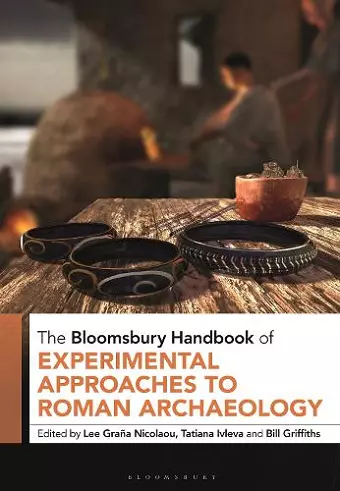The Bloomsbury Handbook of Experimental Approaches to Roman Archaeology
Bill Griffiths editor Lee Graña Nicolaou editor Dr Tatiana Ivleva editor
Format:Hardback
Publisher:Bloomsbury Publishing PLC
Published:12th Dec '24
Currently unavailable, and unfortunately no date known when it will be back

A comprehensive guide to Roman experimental archaeology, providing an overview of the key themes, methodologies and applications, and illustrated by a diverse array of international case studies.
This volume is the first comprehensive overview of Roman experimental archaeology, exploring its key themes, methodologies and applications through a diverse array of international case studies. Experiments, simulations and reconstructions are important methods for understanding the past, from uncovering how ancient objects and structures were made, used, destroyed, deposited and affected underground, to illuminating the experiences of tasting ancient foods, fighting alongside comrades or living in replicated structures. Although the incorporation of experimentation has had great success in prehistoric studies, greater reliance on the wealth of literary and material sources remaining from the classical period has meant that its potential for Roman studies has yet to be fully realised.
The 26 chapters in this book are divided into 5 thematic parts, each of which opens with a contextualizing introduction that frames the detailed case studies found in individual chapters and showcases the actual and potential diversity of experimentation as applied to the Roman past by scholars, re-enactors, and practitioners in the heritage sector. In laying out a detailed guide to Roman experimental archaeology, the volume as a whole maps its past, present and future, and provides a firm foundation for further practical research and collaboration. In doing so, it reasserts that experiments and reconstructions are a significant resource for testing or developing theories, rather than merely artistic replicas, and that the vast amount of quantifiable data they yield can be invaluable in support of interpretations of relevant archaeological or historical evidence, regardless of the period in question and beyond the confines of academia.
An innovative volume with an impressive range of international contributors across a wide spectrum including professional archaeology, academia, museums, and independent researchers. With its strong focus on robust methodology and data gathering, it will be an invaluable resource for practitioners of experimental archaeology in Roman studies and beyond. -- Ellen Swift, Professor of Roman Archaeology, University of Kent, UK
This is a well written and structured handbook that introduces the emerging field of experimental Roman Archaeology. It provides a positive contribution to scholarship and is a useful resource for researchers approaching this topic for the first time. -- Nicky Garland, Training and Communications Project Manager, University of York, UK
This provides a window into the experimental and experiential approaches that are contributing to our understanding of the Roman World. It presents a full spectrum of research questions and methodologies at a variety of scales, covering everything from specific skills in ancient glassworking to the play of light in Roman houses and the recreation of culinary practices. It will present students and more experienced researchers alike with a chance to critically engage with the challenges and opportunities for contemporary experimental research in both physical and digital spaces. -- Peter Hommel, Senior Lecturer in Archaeomaterials, University of Liverpool, UK
ISBN: 9781350217836
Dimensions: 246mm x 176mm x 38mm
Weight: 1168g
544 pages